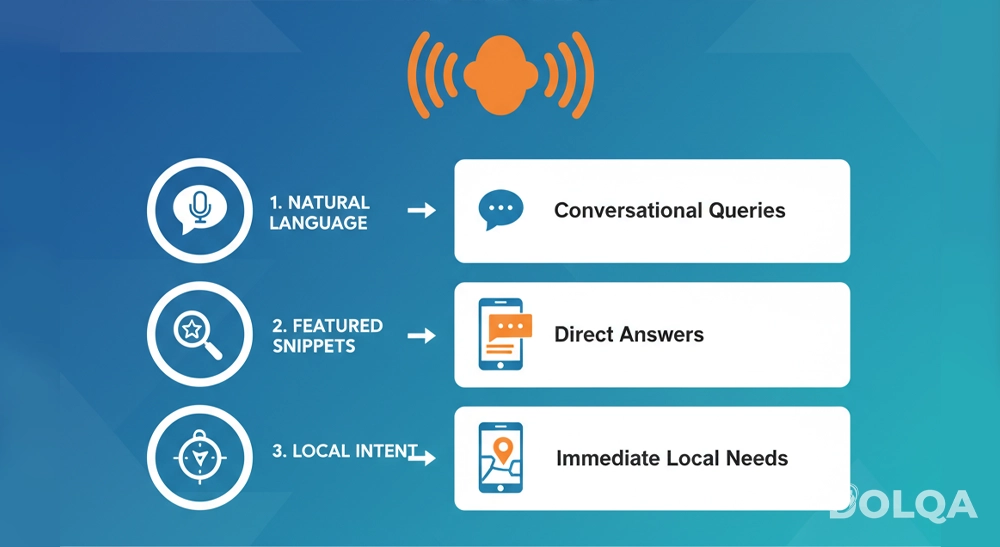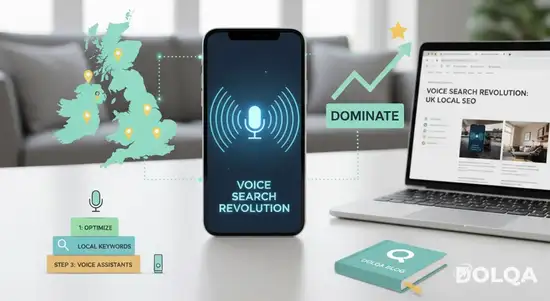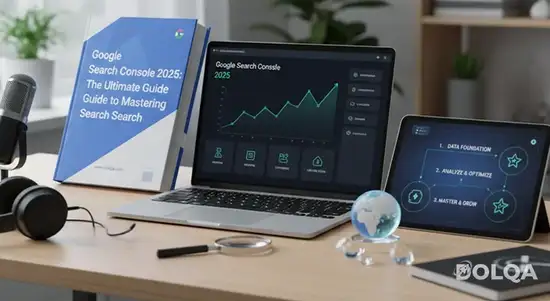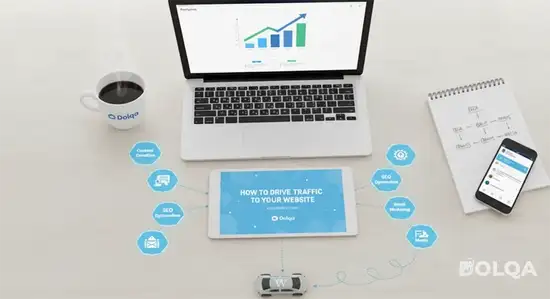Introduction: The Voice Revolution in Local Search
Voice search has fundamentally transformed how consumers discover local businesses. By 2025, over 55% of households use voice-enabled devices, and approximately 58% of consumers have utilized voice search to find local business information within the past year. This seismic shift demands that businesses recalibrate their local SEO voice search strategies to remain competitive in an increasingly conversational digital landscape.
The technical architecture of voice search differs substantially from traditional text-based queries. Voice assistants like Google Assistant, Siri, and Alexa process natural language differently, prioritizing context, user intent, and conversational patterns. For businesses operating in local markets, understanding these nuances isn't optional—it's essential for survival in the modern search ecosystem.
Picture yourself asking your phone for restaurant recommendations while driving through an unfamiliar neighborhood—this is the exact moment your local SEO strategy either wins or loses a customer.
How Does Voice Search Actually Change Local SEO?
Voice search local queries fundamentally differ from typed searches in three critical ways: query length, conversational tone, and immediate intent.
Traditional text searches average 2-3 words ("pizza near me"), while voice searches extend to 7-10 words ("Where can I find the best gluten-free pizza within five miles?"). This elongation creates opportunities for businesses that optimize for long-tail, question-based keywords that mirror natural speech patterns.
The technical implications are substantial:
- Natural Language Processing (NLP): Search engines now prioritize semantic understanding over exact keyword matching
- Featured Snippets Dominance: Voice assistants extract answers from position zero results 75% of the time
- Mobile-First Indexing: Voice searches occur predominantly on mobile devices, making mobile optimization non-negotiable
- Local Intent Signals: Voice queries demonstrate 3x higher purchase intent than text searches

What Are the Core Technical Elements of Voice Search Optimization?
Schema Markup Implementation
Structured data markup serves as the foundational technical element for conversational SEO. Implementing LocalBusiness schema provides search engines with explicit information about your business hours, location, services, and contact information in machine-readable format.
Critical schema types include:
- LocalBusiness Schema: Defines your business category, geographic coordinates, and service areas
- FAQ Schema: Directly answers common questions voice assistants prioritize
- Review Schema: Displays star ratings and testimonials that influence nearby search ranking
- Product/Service Schema: Details specific offerings with pricing and availability
Google Business Optimization: Your Voice Search Foundation
Google Business Profile (formerly Google My Business) functions as the primary data source for voice search results. Complete optimization requires:
Essential Profile Elements:
- Accurate NAP (Name, Address, Phone) consistency across all platforms
- Comprehensive business categories (primary and secondary)
- High-quality images with proper alt text and geotagging
- Regular posts demonstrating active engagement
- Response management for reviews within 24-48 hours
Advanced Optimization Techniques:
- Service area definition with specific radius or boundaries
- Attribute selection (wheelchair accessible, outdoor seating, etc.)
- Q&A section population with common voice queries
- Google Posts leveraging event, offer, and update formats
- Integration with Google Analytics for performance tracking
Technical Site Architecture for Voice Queries
Your website's technical infrastructure must support rapid loading, mobile responsiveness, and clear information hierarchy:
- Page Speed Optimization: Voice search results load 52% faster than average web pages; aim for sub-3-second load times
- Mobile Responsiveness: Implement responsive design with touch-friendly navigation and readable font sizes
- HTTPS Security: Google prioritizes secure sites for local recommendations
- Structured URL Architecture: Create logical, keyword-rich URL structures that reflect business locations and services
How Can You Create Content That Captures Voice Search Traffic?
Conversational Keyword Research
Traditional keyword research tools require supplementation with voice-specific methodologies:
- Question-Based Keywords: Utilize tools like AnswerThePublic and Google's "People Also Ask" to identify common question formats
- Long-Tail Variations: Target 5-10 word phrases that mirror natural speech patterns
- Local Modifiers: Incorporate neighborhood names, landmarks, and directional terms
- Action-Oriented Phrases: Focus on "near me," "open now," "best," and "closest" modifiers
FAQ Content Architecture
Structured FAQ sections serve dual purposes: directly answering user questions and providing content voice assistants can easily extract.
Effective FAQ Construction:
- Format questions as complete sentences users would actually speak
- Provide concise 40-60 word answers immediately following questions
- Include H2 or H3 heading tags for each question
- Expand with detailed explanations after the initial answer
- Link to related content for comprehensive coverage
Location-Specific Landing Pages
For businesses serving multiple locations, dedicated landing pages maximize nearby search ranking potential:
Each location page should contain:
- Unique, location-specific content (minimum 500 words)
- Embedded Google Maps with accurate business location
- Local customer testimonials and case studies
- Neighborhood-specific keywords and landmarks
- Distinct meta titles and descriptions
- Local business hours and contact information
What Technical Metrics Should You Monitor for Voice Search Success?
Performance Indicators
Traditional SEO metrics require reinterpretation for voice search effectiveness:
Primary Metrics:
- Featured Snippet Acquisitions: Track position zero rankings for target keywords
- Google Business Profile Insights: Monitor discovery searches (how customers found your listing)
- Direct Request Queries: Measure branded voice searches
- Click-to-Call Rates: Voice searchers convert via phone calls at higher rates
- Direction Requests: Geographic engagement indicates local intent capture
Secondary Indicators:
- Mobile bounce rates and session durations
- Page load speeds across mobile devices
- Schema markup validation through Google's Rich Results Test
- Local pack appearances for target keywords
- Review velocity and average rating trends
Competitive Analysis Framework
Understanding your competitive landscape requires specialized tools and approaches:
- Local SERP Analysis: Document which businesses appear for voice-activated "near me" searches
- Google Business Profile Audits: Compare your profile completeness against top competitors
- Voice Search Simulators: Test actual device responses for target queries
- Citation Consistency Monitoring: Ensure NAP uniformity across directories and platforms
Advanced Strategies for Voice Search Dominance
Natural Language Content Optimization
Write content that sounds conversational when read aloud. Use second-person pronouns, contractions, and informal phrasing while maintaining professional authority.
Implementation Checklist:
- Read content aloud during editing to ensure natural flow
- Incorporate transitional phrases that mirror spoken language
- Address the reader directly with "you" and "your"
- Break complex concepts into digestible, spoken-friendly explanations
- Use active voice over passive constructions
Hyperlocal Content Development
Create content targeting micro-neighborhoods and specific community landmarks:
- Publish blog posts about local events and community news
- Develop guides featuring neighborhood-specific recommendations
- Create video content showcasing your physical location and surroundings
- Interview local customers and feature their stories
- Sponsor or participate in community events with documented coverage
Multi-Platform Voice Assistant Optimization
While Google dominates local search, optimize for alternative platforms:
- Amazon Alexa: Claim your business on Alexa and optimize for "Alexa, find..."
- Apple Siri: Ensure Apple Maps integration and accurate business information
- Microsoft Cortana: Verify Bing Places listing accuracy
- Voice-Enabled Apps: Consider developing or listing in voice-activated directory services
Conclusion: Your Voice Search Action Plan
Voice search represents the present and future of local discovery. Businesses that implement comprehensive local SEO voice search strategies—combining technical optimization, Google Business optimization, conversational content, and consistent monitoring—position themselves to capture the growing segment of consumers using voice-enabled devices.
Begin with foundational elements: optimize your Google Business Profile, implement schema markup, ensure mobile responsiveness, and create FAQ content addressing common customer questions. Progress to advanced strategies including hyperlocal content development, natural language optimization, and multi-platform presence.
The competitive advantage in nearby search ranking belongs to businesses that recognize voice search not as a trend but as a fundamental shift in consumer behavior. Start implementing these strategies today, and you'll establish the authoritative local presence that voice assistants recommend to your potential customers.
Sources and References
- Google Search Statistics and Trends, Google Search Central Documentation
- Voice Search Statistics and Usage Patterns, Statista Digital Market Insights
- Local Search Ranking Factors, Whitespark Local SEO Research Study
- Schema.org Structured Data Documentation, Schema.org Technical Specification
- Google Business Profile Best Practices, Google Business Profile Help Center







Comments (0)
Leave a Comment
No comments yet. Be the first to comment!